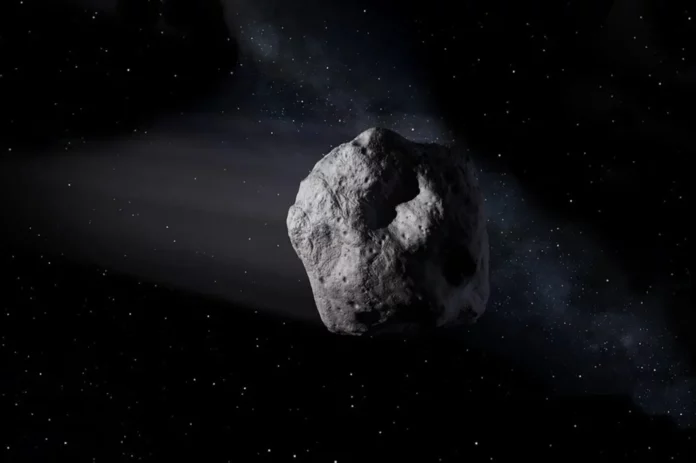Last year, for a brief but exciting time, the Earth had two satellites. A small asteroid stayed close to our planet in its orbit around the Sun and, temporarily captured by Earth’s gravity, became a distant mini-satellite. A closer look at the space rock reveals a very familiar origin: Earth’s mini-moon may actually be a broken off piece of our regular moon.
The small near-Earth object 2024 PT5 was first spotted on August 7, 2024 by the Asteroid-Toward Earth Impactor Last Alert System (ATLAS). The tiny asteroid is only 33 feet (10 meters) across, and its orbit around the Sun is almost identical to that of the Earth, suggesting that it could have formed nearby. According to a recent study published in the Astrophysical Journal Letters, the asteroid may be composed of rock that broke off the Moon’s surface and was ejected into space after a strong impact.
“We had a general idea that this asteroid may have come from the Moon, but the definitive proof was that it was rich in silicate minerals – not the kind found on asteroids, but the kind found in lunar rock samples,” said Teddy Carriage, an astronomer at Lowell Observatory in Arizona and lead author of the study.
Asteroids typically come from the main asteroid belt between the orbits of Mars and Jupiter, but there is a small population of space rocks that were ejected from the moon’s surface after a powerful impact. “This is a story about the Moon told by asteroid scientists,” adds Kareta. “It’s a rare situation where we set out to study an asteroid, but then wandered into new territory in terms of questions we can ask of 2024 PT5.”
When it was first discovered, the spectrum of reflected sunlight from the mini-moon’s surface did not match any other type of asteroid, but instead closely resembled rocks from our Moon. This, as well as the way the object was moving, led the scientists conducting the study to conclude that the space rock was formed from our natural satellite.
Because it is not made of the same material as asteroids, planetary scientists wanted to rule out that the mini-moon is a piece of space debris in an orbit similar to Earth’s (in 2020, Earth had another temporary mini-moon that turned out to be an old rocket booster). The difference between an asteroid and space junk is how they move in space, as particles of light, or photons, from the Sun affect objects in space with a tiny force, speeding them up or slowing them down.
This force of solar radiation has a smaller effect on the movement of natural objects, such as asteroids, in space. “Human-made debris is usually relatively light and moves under the pressure of sunlight,” said Oscar Fuentes-Munoz, a NASA postdoctoral fellow and co-author of the new study, in a statement. “The fact that 2024 PT5 does not move in this way indicates that it is much denser than [human-made] space debris.”
The scientists who conducted the study also noticed the lack of space weathering on the surface of the mini-moon, indicating that the collision that led to its creation probably occurred several thousand years ago.
The discovery of Moon-related asteroids may increase as telescopes become more sensitive to detecting smaller space rocks. If lunar asteroids can be tracked to a specific impact crater on the Moon, it could help scientists learn more about the process of cratering the Moon’s surface, the study says.









